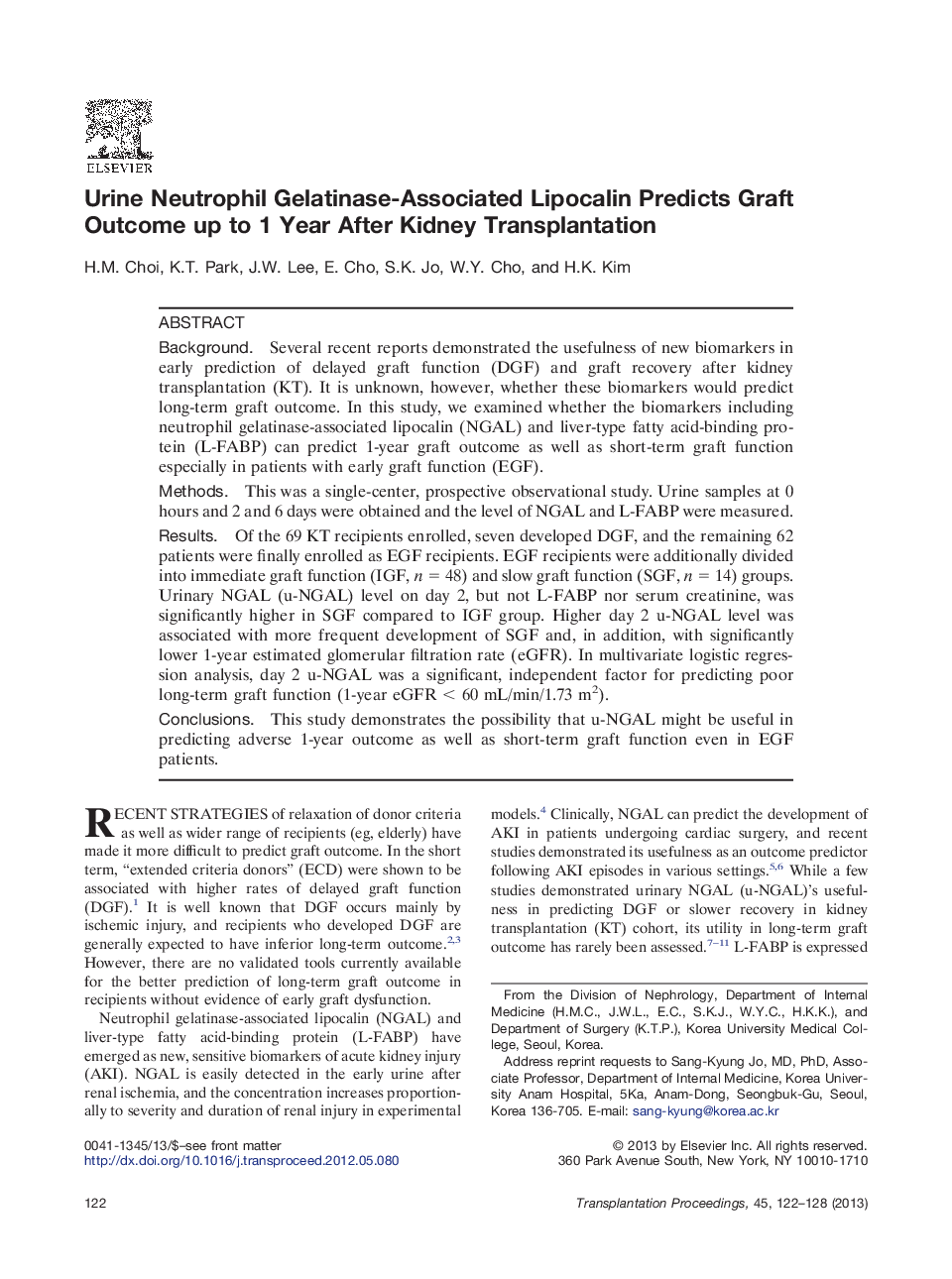| Article ID | Journal | Published Year | Pages | File Type |
|---|---|---|---|---|
| 4257074 | Transplantation Proceedings | 2013 | 7 Pages |
BackgroundSeveral recent reports demonstrated the usefulness of new biomarkers in early prediction of delayed graft function (DGF) and graft recovery after kidney transplantation (KT). It is unknown, however, whether these biomarkers would predict long-term graft outcome. In this study, we examined whether the biomarkers including neutrophil gelatinase-associated lipocalin (NGAL) and liver-type fatty acid-binding protein (L-FABP) can predict 1-year graft outcome as well as short-term graft function especially in patients with early graft function (EGF).MethodsThis was a single-center, prospective observational study. Urine samples at 0 hours and 2 and 6 days were obtained and the level of NGAL and L-FABP were measured.ResultsOf the 69 KT recipients enrolled, seven developed DGF, and the remaining 62 patients were finally enrolled as EGF recipients. EGF recipients were additionally divided into immediate graft function (IGF, n = 48) and slow graft function (SGF, n = 14) groups. Urinary NGAL (u-NGAL) level on day 2, but not L-FABP nor serum creatinine, was significantly higher in SGF compared to IGF group. Higher day 2 u-NGAL level was associated with more frequent development of SGF and, in addition, with significantly lower 1-year estimated glomerular filtration rate (eGFR). In multivariate logistic regression analysis, day 2 u-NGAL was a significant, independent factor for predicting poor long-term graft function (1-year eGFR < 60 mL/min/1.73 m2).ConclusionsThis study demonstrates the possibility that u-NGAL might be useful in predicting adverse 1-year outcome as well as short-term graft function even in EGF patients.
